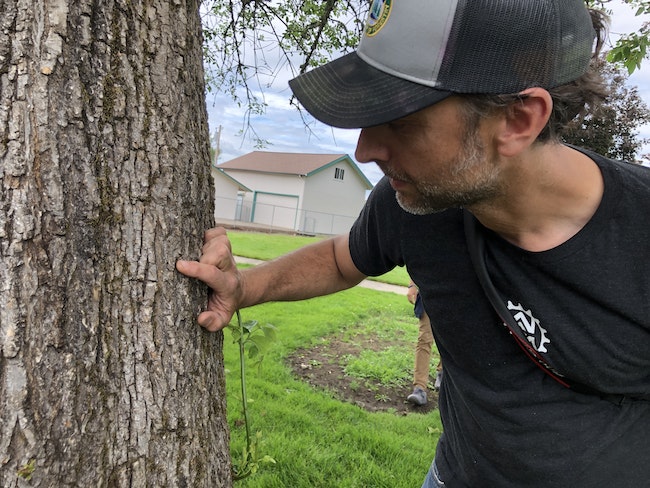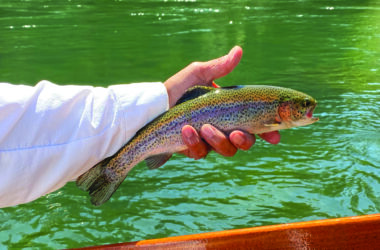 ODF Invasive Species Specialist WyattWilliams points to a tiny D-shaped exit hole made by an emerald ash borer as it emerged from an ash tree in Forest Grove.
ODF Invasive Species Specialist WyattWilliams points to a tiny D-shaped exit hole made by an emerald ash borer as it emerged from an ash tree in Forest Grove.


The long-anticipated arrival in Oregon this summer of the destructive emerald ash borer sharpens concerns about the impacts to urban forests, wetlands and streams. On June 30, the emerald ash borer, an exotic beetle that infests ash trees, was discovered in Forest Grove, marking the first confirmation of the invasive pest on the West Coast. In Oregon, the establishment of EAB could devastate whole habitat types that are dominated by Oregon ash such as ash swales and sensitive riparian zones, as well as reduce urban forest cover. This pest has proven deadly to all ash species in North America and Europe, including the native Oregon ash. Wyatt Williams is the Oregon Department of Forestry’s Invasive Species Specialist. He helped collaborate on the state’s response plan to emerald ash borer, published in March 2021. For the past couple years he has been managing a federal grant to try and save the gene pool of the state’s only native ash species ahead of a pest that could wipe it out. “Since it was first found in the Detroit, Mich. area back in 2002, EAB has become the most destructive and costliest forest pest ever to invade North America,” said Williams. At least five ash species native to the central U.S. have become critically endangered as EAB spreads across the country killing hundreds of millions of urban and wild ash trees.” Within a decade of EAB’s arrival in an area, most ash trees will be dead or dying. The concern in Oregon is for Oregon ash because of the important ecological role it plays along streams and in wetlands. State officials are working to determine how far and how fast this destructive insect is spreading in Oregon. The public can help by learning what to look for and reporting any sightings. Be alert: It is important to stop new outbreaks before they start. Early detection, coupled with rapid response, can stop the spread of new and emerging invasive species before they become established. Learn to recognize ash trees: Oregon ash is a deciduous hardwood tree found most commonly in wetlands and along streams. “It’s an ecologically vital tree as it shades water, keeping it cooler for fi sh. The roots stabilize streambanks, reducing erosion. And lots of animals, birds and insects eat the seeds and leaves. Losing it will likely have a huge impact on those ecosystems,” Williams explained. The first goal is to try to preserve as much of the tree’s genetic diversity as we can before it’s lost. The U.S. Forest Service’s Dorena Genetics Resource Center in Cottage Grove stores the ash seeds and is sharing them with researchers. “The researchers will test for any resistance to EAB. If any is found, we might then be able to breed resistance into local strains and replant streambanks,” he said. Know how to identify the emerald ash borer: Insect identification: Adult: 7.5 to 13.5 mm (0.3 to 0.5 inch) long, slender, and metallic olive to emerald green; active June through July Larva: 2.6 to 3.2 cm (1 to 1.3 inches) long, creamy white, with bell-shaped segments; found under the bark throughout the year; causes damage to tree by eating tissue below the bark. Report sightings of emerald ash borer: Report online at the Oregon Invasive Species Council hotline. Share information about emerald ash borer with others, including neighbors, fellow gardeners, hikers, mushroom hunters and campers. Do not move or transport ash wood: Even after a tree has died or has been cut down, there is still the possibility for the emerald ash borer to be present in the wood. Keeping the wood on the same site as the infected tree can help to slow the spread of the insect.








